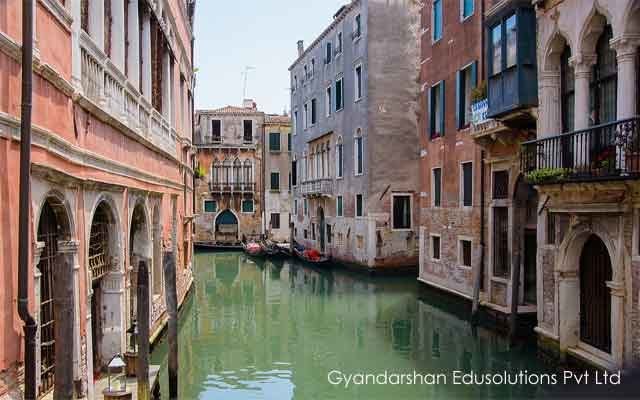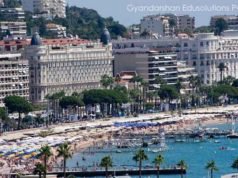Discover Venice: The Timeless Jewel of Italy’s Veneto Region
Introduction
Venice, the capital of northern Italy’s Veneto region, is a city like no other. Known for its labyrinthine canals, stunning architecture, and rich history, Venice is a destination that evokes romance, mystery, and beauty. Built on over 100 small islands in the Venetian Lagoon, Venice is one of the most iconic cities in the world. Visitors come for its picturesque landscapes, historical sites, and unparalleled cultural heritage.
This guide delves into the best tourist attractions in Venice, exploring their specialties, historical significance, and the best time to visit. From the famous Piazza San Marco to the peaceful hidden corners of the city, Venice offers an unforgettable experience for travelers seeking history, art, and adventure.
Hidden gems in Venice, off-the-beaten-path Venice, Venice for first-time visitors, Venice romantic travel ideas, best places to eat in Venice
1. Piazza San Marco: The Heart of Venice
Specialty:
Piazza San Marco (St. Mark’s Square) is the central hub of Venice, renowned for its grandeur and historical importance. The square is surrounded by some of the city’s most iconic buildings, including St. Mark’s Basilica and the Campanile (bell tower). It is often referred to as “the drawing room of Europe” because of its wide-open space and stunning architecture.
Locality:
Located in the heart of Venice, Piazza San Marco is easily accessible by foot from most of the city’s major attractions. It is situated in the San Marco district, adjacent to the Grand Canal.
Historical Facts:
Piazza San Marco has been the focal point of Venetian life for centuries. Originally the site of the Venetian Republic’s public meetings and ceremonies, it was designed to showcase the power and wealth of the Venetian state. The square became even more significant after the construction of St. Mark’s Basilica in the 11th century.
Best Time to Visit:
The best time to visit is early in the morning or late in the evening to avoid the overwhelming crowds. Venice is busiest during the summer months, particularly in July and August, so spring and autumn are ideal for a more relaxed visit.
Nearby Restaurants and Hotels:
-
Restaurants:
- Caffè Florian (historic café with luxurious surroundings)
- Ristorante Quadri (fine dining overlooking the square)
-
Hotels:
- Hotel Danieli (luxury hotel offering views of the square)
- Hotel Palazzo Barbarigo (romantic boutique hotel by the Grand Canal)
2. St. Mark’s Basilica: A Glimpse into Venice’s Religious Heritage
Specialty:
St. Mark’s Basilica is one of the most famous churches in the world, known for its opulent Byzantine architecture and stunning mosaics. The basilica houses a rich collection of art and artifacts, including the famous Pala d’Oro (Golden Altarpiece).
Locality:
Situated in Piazza San Marco, St. Mark’s Basilica is located in the heart of the city. It is easily accessible by foot from various parts of Venice, making it a central point in any tourist’s itinerary.
Historical Facts:
The basilica was originally constructed in the 9th century to house the remains of St. Mark the Evangelist. Over the centuries, the basilica underwent several renovations and expansions, resulting in the magnificent structure we see today. Its distinctive five-domed design reflects the city’s wealth and its connections to the Byzantine Empire.
Best Time to Visit:
To avoid long lines, it’s best to visit St. Mark’s Basilica early in the morning. The basilica is open year-round, but the quieter months of the fall and spring provide a more peaceful experience.
Nearby Restaurants and Hotels:
-
Restaurants:
- Ristorante da Ivo (classic Venetian seafood cuisine)
- Osteria alle Testiere (a cozy, intimate dining experience)
-
Hotels:
- The Gritti Palace (luxury hotel with views of the Grand Canal)
- Bauer Palazzo (opulent hotel near St. Mark’s Square)
3. The Grand Canal: Venice’s Iconic Waterway
Specialty:
The Grand Canal is the main water thoroughfare in Venice, flanked by stunning palaces, historic buildings, and lively markets. Visitors can take a Vaporetto (water bus) or gondola ride to explore this picturesque waterway.
Locality:
The Grand Canal runs through the center of Venice, dividing the city into two parts. It stretches for about 3.8 kilometers, starting from the Piazzale Roma and ending at the Lagoon.
Historical Facts:
The Grand Canal has been Venice’s main transportation route for centuries. The palaces lining the canal date back to the 13th century and are architectural treasures that showcase the wealth and power of Venice during its heyday as a maritime republic.
Best Time to Visit:
The Grand Canal is a year-round destination, but the best time to visit is during the early morning or evening when the light is softer, and the crowds are thinner. Fall and spring are also perfect times to visit for pleasant weather.
Nearby Restaurants and Hotels:
-
Restaurants:
- Antiche Carampane (traditional Venetian dishes)
- La Zucca (vegetarian-friendly with fresh local ingredients)
-
Hotels:
- Ca’ Sagredo Hotel (historic hotel with views of the Grand Canal)
- Hotel Antiche Figure (charming, budget-friendly hotel with canal views)
4. Rialto Bridge: Venice’s Most Famous Bridge
Specialty:
The Rialto Bridge is the oldest and most iconic of Venice’s four bridges crossing the Grand Canal. Known for its distinctive design, the bridge features a series of steps leading up to the central arch, with shops lining the sides.
Locality:
The Rialto Bridge is located in the Rialto district of Venice, which is the commercial heart of the city. It connects the San Marco district with the San Polo district, making it a central spot for tourists and locals alike.
Historical Facts:
The Rialto Bridge was completed in 1591, replacing earlier wooden bridges. It was designed by Antonio da Ponte and has since become one of the most photographed landmarks in Venice. Historically, the bridge has been a vital crossing point for merchants and traders traveling through the city.
Best Time to Visit:
The Rialto Bridge is always busy, but early mornings and late afternoons offer a more peaceful experience. It’s particularly beautiful at sunrise, with the first light casting a golden hue over the Grand Canal.
Nearby Restaurants and Hotels:
-
Restaurants:
- Caffè del Doge (known for its espresso and Venetian pastries)
- Osteria Bancogiro (a lovely spot near the Rialto Bridge with seafood specialties)
-
Hotels:
- Hotel Antiche Figure (budget hotel with Grand Canal views)
- NH Collection Venezia Palazzo Barocci (luxury hotel near Rialto Bridge)
5. The Doge’s Palace: A Monument to Venice’s Political History
Specialty:
The Doge’s Palace (Palazzo Ducale) is a masterpiece of Gothic architecture and was once the seat of the Venetian government. The palace houses impressive art collections, including works by Titian and Tintoretto.
Locality:
Located in Piazza San Marco, the Doge’s Palace is easily accessible from most of Venice’s key attractions, including St. Mark’s Basilica and the Rialto Bridge.
Historical Facts:
The Doge’s Palace served as the residence of the Doge, the supreme ruler of Venice, and the center of the Venetian Republic’s government. The palace’s construction began in the 9th century, and it was expanded over the years to reflect the city’s power and wealth.
Best Time to Visit:
The Doge’s Palace can be visited year-round, but it is less crowded during the off-season in spring and autumn. Early mornings are also ideal for avoiding long lines.
Nearby Restaurants and Hotels:
-
Restaurants:
- Ristorante Da Paolo (Mediterranean cuisine near the palace)
- Antico Pignolo (traditional Venetian fare)
-
Hotels:
- Hotel Cavalletto & Doge Orseolo (historic hotel near the Doge’s Palace)
- Hotel Concordia (luxury hotel steps from St. Mark’s Square)
6. Murano and Burano: The Colorful Islands of the Venetian Lagoon
Specialty:
Murano is famous for its glass-making tradition, while Burano is known for its vibrant houses and lace-making history. Both islands offer a peaceful escape from the busy city center and are perfect for day trips.
Locality:
Both Murano and Burano are located within the Venetian Lagoon, just a short boat ride away from the main island of Venice.
Historical Facts:
Murano has been the center of glass-making since the 13th century, while Burano is known for its lace-making industry dating back to the 16th century. The colorful houses of Burano were historically painted in bright colors to help fishermen find their way home.
Best Time to Visit:
Both islands are beautiful year-round, but spring and summer are particularly pleasant, with vibrant flowers and clear weather. Burano, in particular, is known for its colorful houses, which look stunning in the sunlight.
Nearby Restaurants and Hotels:
-
Restaurants:
- Trattoria al Gatto Nero (Burano’s famous seafood restaurant)
- Osteria da Ricci (Murano’s best glassblower and dining experience)
-
Hotels:
- Hotel Venezia (cozy hotel in Burano)
- Murano Palace Hotel (luxury hotel on Murano Island)
Conclusion
Venice is a city that offers endless exploration, with its rich history, beautiful canals, and unparalleled art and architecture. Whether you are wandering through the cobbled streets of Piazza San Marco, cruising along the Grand Canal, or enjoying the peaceful beauty of Murano and Burano, Venice promises to leave a lasting impression on every visitor. With its timeless charm, Venice continues to captivate travelers from around the globe, making it an essential stop on any European itinerary.














